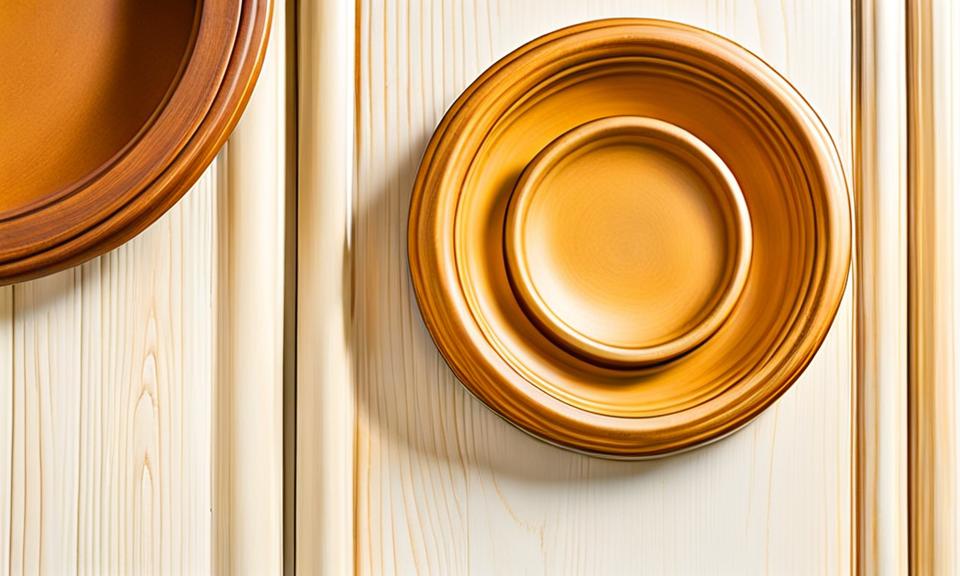Restore Your Kitchen's Style by Refinishing Cabinet Pulls
Tired of turning to your kitchen's worn-out cabinet hardware and feeling like it detracts from the style you want? Refinishing those faded pulls and knobs can make a big visual impact, quickly updating the look without a full kitchen remodel.
With some simple DIY techniques, you can strip down the existing finish and restore it to a like-new sheen. The process involves carefully prepping the hardware, painting with cabinet enamel, and sealing with a protective topcoat. We’ll walk through all the steps for your kitchen’s hardware makeover.

Assessing the Damage on Your Cabinet Hardware
Before determining the best restoration approach, take a close look at the current condition of your cabinet pulls and knobs. Check for cracking or peeling in the existing finish. See if the surface is cloudy or dull instead of having a clear shine.
Hardware with minor blemishes can likely be salvaged with thorough cleaning, light sanding, and new paint. But if the damage is severe – with the underlying surface exposed in spots – replacement may be the wiser option.
Preparation and Removal of Existing Hardware
To properly refinish your hardware, begin by removing the pulls and knobs from your cabinets. You’ll need a screwdriver suited to the existing screw heads. Place each piece on a cloth or cardboard as you detach it to prevent scratches.
Gather essential supplies like sandpaper, primer, cabinet paint, clear polyurethane, brushes, and containers. Mild dish soap and water are great for gently cleaning prior to painting.
Sanding and Priming the Hardware
Use 220-grit sandpaper to lightly scuff the surface of each cabinet pull, removing any glossy residue or grime. This helps the new paint adhere properly. Wipe off all dust.
After cleaning, apply 1-2 coats of spray primer formulated for use on cabinets. Allow proper drying time between coats as indicated on the can. The primer provides a uniform base layer.
Applying Fresh Paint for a Color Makeover
Now comes the fun part – choose the new color! For the most durable and long-lasting finish, select a high-quality semi-gloss enamel paint made specifically for cabinetry.
Slowly apply 2-3 thin, even coats with a paintbrush or spray gun, allowing the full drying time between coats. Rushing this risks drips, uneven coverage, or bubbling.
Adding a Clear Protective Topcoat
Once the painted cabinet hardware has fully cured, use a clear polyurethane sealer as a protective top layer. This adds shine while also guarding against potential chips or scrapes from everyday use.
As with the paint, apply the topcoat in 2-3 gradual coats. Let dry fully for at least 1-2 days before reinstalling the newly refreshed hardware.
Reinstallation and Maintaining the Finish
Screw each individual piece back onto your cabinets, standing back occasionally to admire your work! Your once-tired kitchen now shows its style with renewed cabinet hardware.
Keep the finish looking its best by wiping painted surfaces gently with mild soap and water when cleaning the cabinets. Reapply protective sealant annually or as needed.
The Benefits of DIY Cabinet Hardware Makeovers
Beyond just improving your kitchen's aesthetic, refinishing your existing hardware has many advantages over fully replacing it:
- It's a budget-friendly update, costing far less than brand new hardware
- Allows you to customize the color to your preference
- Long-lasting results when done thoroughly with prep and topcoat
- The satisfaction of completing your own DIY home improvement project
As you can see, restoring faded and damaged cabinet pulls or knobs truly makes an impact but doesn't require a complete renovation. With some elbow grease and the right materials and techniques, you can overhaul your existing hardware through cleaning, priming, painting, and sealing.
In a short weekend, you can give your kitchen a mini makeover and renewed style. Don't settle for lackluster cabinet hardware - restore it instead!